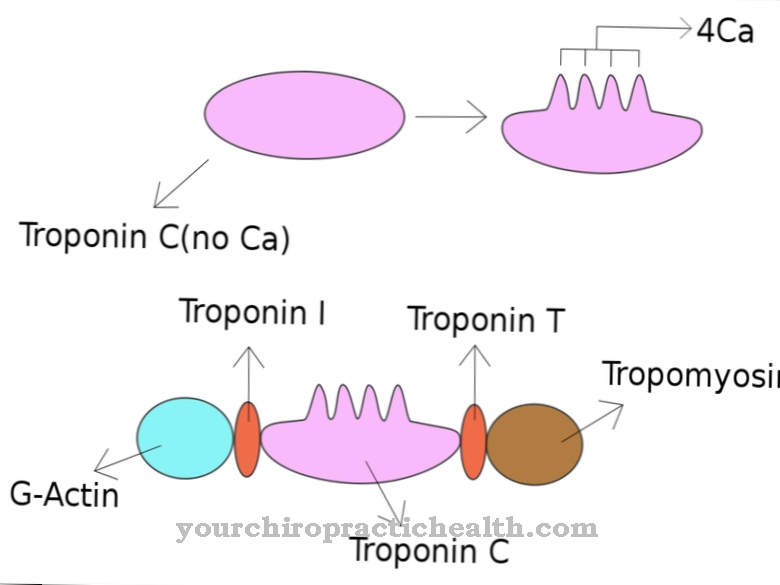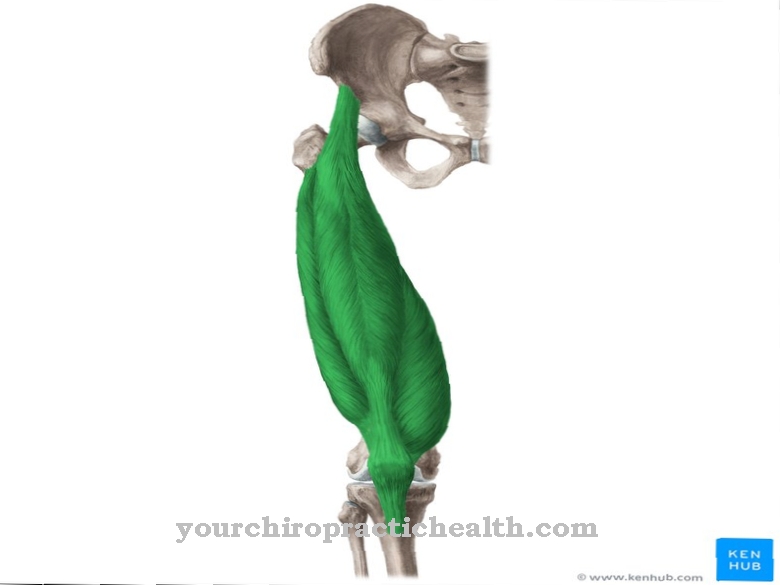The Mesoderm is the middle cotyledon of the embryoblast. Various tissues of the body are differentiated from it. In mesodermal inhibitory dysplasias, embryonic development is interrupted prematurely.
What is the mesoderm?
The embryo develops from a so-called blastocyst, also known as an embryoblast. In triploblastic creatures like humans, the embryoblast has three different cotyledons: an inner, a middle and an outer cotyledon. The first differentiation of the embryo results from the cotyledons.
The fetus thus receives different cell layers, which over time produce the different structures, organs and tissues. The cotyledons develop from the blastula during gastrulation. The inner cotyledon is also called the endoderm. The outer cotyledon is called the ectoderm. The mesoderm corresponds to the middle cotyledon. Its cells develop in a human embryo in the third week of embryonic development. During an earlier stage, the epiblast and hypoblast developed on the embryo.
The cells of the mesoderm migrate between these two structures. The term mesoderm is a term used in ontogenesis, which deals with the development of an individual. The mesenchyme in particular develops from the mesoderm. However, the two terms are not synonymous. The mesenchyme is more of a histological than ontological term.
Anatomy & structure
In the third week of development, a primitive streak forms on the embryo. In addition, the intraembryonic mesoderm is created. A two-leaf germinal disc is transformed into a three-leaf germinal disc. This process is called gastrulation.
The primitive stripe develops on the surface of the ectoderm and is a stripe-shaped compaction of proliferating cells of the outer cotyledon. This strip determines the longitudinal axis of the later body. At the front end, the primitive stripe is thickened and develops into a primitive knot or Hensen's knot. The median plane of the primitive strip sinks to the primitive trough. Cells of the ectoderm dive into the depths there. They come to rest between the ectoderm and the endoderm and form the middle cotyledon. This intraembryonic mesoderm grows to the edges of the germinal disc.
At the edges it becomes the extraembryonic mesoderm. The intraembryonic mesoderm does not form continuously. No mesoderm is formed in the cranial area of the prechordal plate and in the caudal area of the cloacal membrane. The primitive pit is formed in the primitive node, into which some ectoderm cells submerge and move on to the prechordal plate. In the median line, a cell cord, called the notochord process, forms and serves as an attachment for the notochord. The mesoderm tissue next to the notochord is divided into several sections: the axial, the paraxial, the intermediate and the lateral mesoderm.
Function & tasks
The mesoderm consists of multipotent, embryonic stem cells. These cells have a high rate of mitosis. Therefore they play an important role in morphogenesis. Cell division and differentiation are summarized as morphogenesis. These two processes give an embryo its shape.
They create all the necessary types of tissue, cell types and organs. The property of multipotency enables the embryonic stem cells to differentiate into almost any cell type. Only through the determination is the final development program established for the daughter cells of a cell. Determined cells therefore lose multipotency. The cells of the mesoderm are therefore crucial for the early development and the first steps of cell differentiation, because they are not yet determined and therefore show multipotency.
The mesoderm later differentiates into bones, muscles, vessels and blood. The development of the kidneys and gonads also takes place on the basis of mesodermal tissue. In addition, the connective tissue types, the genital organs and the lymph nodes, including the lymph fluid, develop from the multipotent tissue through numerous intermediate steps. The extraembryonic mesoderm only lines the chorionic cavity. The intraembraneous mesoderm is the developing tissue.
The notochord arises from the axial mesoderm. The paraxial mesoderm becomes somites and the intermediate mesoderm becomes the genitourinary system. The lateral plate mesoderm becomes the base of the serosa. A particularly famous development of the mesoderm is that of the mesenchyme. From this type of embryonic connective tissue, in addition to the actual connective tissue, cartilage tissue, bones and tendons as well as muscle tissue, blood, lymph tissue and adipose tissue are formed through differentiation.
Diseases
In terms of developmental history, cancers are often divided into endodermal, ectodermal and mesodermal cancers. Ectodermal cancers begin in the tissues on the surface of the body, that is, on the skin and in the mucous membranes.
Cancers of the gastrointestinal tract, liver, pancreas, respiratory system and urogenital tract arise from epithelial structures. They are therefore called epithelial tumors and mostly correspond to carcinomas. Since the mesoderm becomes bones, muscles and nerve tissue, cancers in these tissues are mesodermal cancers. The tumors usually resemble sarcomas. The leukemia or blood cell cancer are also mesodermal tumor diseases. Mutations can also occur in connection with the tissue of the mesoderm.
Such mutations usually lead to disgenesis or so-called inhibition deformities. Inhibitory malformations arise from an interruption in embryonic development. Organ development comes to a standstill at an early stage. Hypoplasia, aplasia and agenesis can result. In the worst case, organs are completely missing. There are various reasons for this. Genetically caused inhibitory malformations are just as possible as exogenous ones. An example of a mesodermal inhibition malformation is provided by Rieger syndrome, in which iris dysplasia is present and the angle of the eye is also missing.













.jpg)

.jpg)
.jpg)











.jpg)